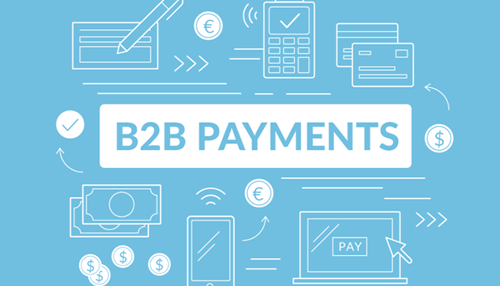Setting up a startup or business entity requires many things, on the legal, financial, practical, and operational fronts. Once you have everything ready to go, it’s time to figure out payment processes. How does your business plan to pay vendors or reimburse employees? Do you have a system in place already or do you need to develop one? Improving B2B is ideal for such situations. Whether you’re just starting out or well established, implementing a B2B process is critical to running your business. Here are a few key benefits of using robust B2B processes in your operation.
Better Spend Visibility
Spend analysis and visibility are both important components of running a B2B business. Analyzing spend across suppliers, products, and other aspects of your business enables you to understand what you’re spending and how to save more money. It also helps you analyze any spend risk. Basically, you need to know where your money is going at all times. Selecting suppliers based on which ones are the least expensive or willing to give you something for a remarkably cheap price isn’t always the best solution. Understanding the full picture of your spend visibility can help you select the right suppliers and pay them properly. A B2B payment solution can put everything no right at your fingertips, giving you full agency over such matters. Another great advantage of monitoring spend visibility with software is its increased efficiency and ability to help reduce fraud. Using the crucial insights provided by the program, managers can assess and reduce fraud across the organization and gain a better understanding/develop a strategy for handling market volatility.
Minimal Labor and Costs
What reduces cost/labor better and more efficiently in automatic payments? By setting up automatic payments via various payment methods, your organization can improve the efficiency of an otherwise time-consuming process. Invoicing is also much easier with digital applications and automation. Automating these processes significantly reduces labor within your organization while simultaneously providing various cost reduction opportunities. The benefits extend to settling and reconciling accounts in addition to assisting with handling payments. The need for a software/automation solution in these critical aspects of B2B operations cannot be overstated. It’s a prudent move to make this transition as soon as possible in order to reap the benefits of the software.
Leverage the Benefits of Virtual Cards
Did you know most businesses still use paper checks to pay invoices? There’s a much better alternative. As mobile devices and smart phones become the norm for making payments and conducting commerce, with them comes the wider adoption of virtual payment cards. In a B2B operation, virtual cards enable payments via one-time-use online cards. No payment information exchanges hands while payments get made in full. The card’s credentials get randomly generated at the time of creation, then they’re linked to existing bank accounts, they expire at specific times. All of these features lead to better efficiency and security for making payments. Virtual cards are an amazing tool for making B2B payments work. Using virtual cards with any B2B Payments solution/software isn’t just essential for Hanson payment security and efficiency; it’s a step up toward the future of payment processing. In addition to streamlining the payments process, virtual cards come with a surprising benefit: can help optimize working capital for any company. How so? Instant payments allow AP departments to hang on to cash longer and virtual cards opens up the possibility of various rebates for the company in the future. Virtual cards are also useful for employees who need to make purchases on behalf of the organization. With all the benefits they offer to an organization, implementing them into your B2B payments solution isn’t just a good idea – it’s essential.
Early Payment Discounts
Cash flow is one of the most crucial considerations for any B2B business. A good way to help keep your cash flow going is getting suppliers to offer early payment discounts (EPD). But what is an EPD, exactly? It’s simply a small Discount on an invoice the supplier provides to your company in exchange for making an early payment to them. There are some pros and cons to the process. EPDs are a common thing in most businesses. They’ve been in use for quite some time. The terms can be flexible and they reduce the risk of late payments/non-payments. you can also offer substantial discounts to better customers or no discounts to suppliers that produce lower profit margins. On the other side of the argument, offering a discount means less revenue and cuts your profit margin. Most companies will accept a discount and just pay the invoice out slowly regardless. There’s also the extra work involved in managing discounted payments. Fortunately, a B2B payment system should help you fully manage EPD payments and determine if they’re worth pursuing for your organization.
Fee Reduction
Perhaps the best benefit of a B2B payment solution at your business is reducing the fees involved with paying the bills. Taking advantage of electronic invoicing and virtual cards reduces the cost per invoice and helps eliminate card payment fees. Streamlining The B2B payments process effectively reduces errors, eliminates hidden fees, reduces borrowing costs as the company maximizes its cash flow. It’s also easier to manage and reimburse employees for purchases they’ve made for the company. Account reconciliation has never been easier and with the implementation of a powerful B2B solution, your organization will be able to thrive in a modern business environment with ease



